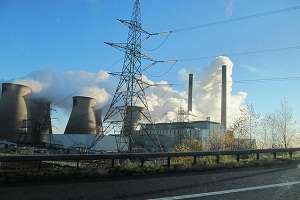Prospective carbon capture site lacks ceiling

Researchers' early attempts to find a Perth Basin site to sequester carbon have detected a suitable porous aquifer, but they are yet to find a non-porous cap rock to contain it.
Curtin University geologist Hugo Olierook says saline water aquifers, in porous stone, are considered suitable for carbon capture and storage (CCS) if they have a layer of impermeable cap rock above.
He has been analysing the results of the Geological Survey of Western Australia's core and wire line drilling at the "Harvey 1" well near Harvey in WA's South West.
"It was my job together with Nick Timms and Claudio Delle Piane to try and log this core," he says.
"First order of business was to understand the geology, whether it was suitable at all for CO2 sequestration.
"That included logging the sedimentology.
"Later on, we did some sampling and with those samples analyse the porosity and the permeability.
"We were trying to essentially figure out how much porous base we have in our reservoir and how impermeable our cap was."
He says the site was chosen because of its proximity to the Collie coal-fired power station: sequestering its CO2 emissions there would minimise transport costs.
A layer of impermeable cap rock was also thought to rise at that point, forming a dome-like structure.
Core sampling, which began at an 895-metre depth due to budget constraints, detected none of the expected cap rock.
He says it may have been present at a shallower depth – and was therefore undetected – or had eroded away.
Analysis of the Lesueur Sandstone aquifer yielded more encouraging early results.
"It's got high porosity and permeability…when you pump it into the ground it can quickly disperse into the surrounding rock," he says.
"The Yarragadee aquifer which provides most of Perth's groundwater is eroded off there, there's no drinking water as such.
"If CO2 did escape by accident at least it wouldn't pollute the groundwater.
"We're planning on at least drilling three more holes and hopefully using one of those holes.
"Unfortunately, due to them missing the caprock, that's a bit of unknown for us.
"In other parts of the Perth Basin, this caprock is I think at least a several hundred meters thick."
His research will form part of a larger investigation into Perth Basin as a site for carbon sequestration, coordinated by CSIRO scientist Dr Linda Stalker.
Provided by Science Network WA


















